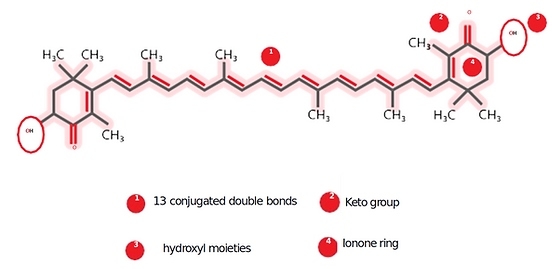
HYDRO-CHEM SA (Pty) Ltd are now a supplier of
Find out more about our new product MCT OIL.
ASTAXANTHIN
A Brief Overview

Benefits
ASTAXANTHIN was shown to be a much more powerful antioxidant than vitamins C and E, and more active than other carotenoids such as beta-carotene, lycopene, lutein and zeaxanthin, among others.
The enhanced activity of ASTAXANTHIN may stem from its molecular structure. ASTAXANTHIN belongs to the xanthophyll group of carotenoids, or the oxygenated carotenoids.
The hydroxyl and keto functional groups present in the ending ionone ring of ASTAXANTHIN may be responsible for its uniquely powerful antioxidant activity and for its ability to span the membrane bi-layers as a direct result of its more polar configuration relative to other carotenoids.
Carotenoids with polar end groups like ASTAXANTHIN span the lipid membrane bi-layer with their end groups located near the hydrophobic-hydrophilic interface, where free-radical attack first occurs.
Natural Occurrence
Haematococcus pluvialis is believed to accumulate the highest levels of ASTAXANTHIN in nature. Commercially grown Haematococcus pluvialis can accumulate more than 40 gms of ASTAXANTHIN per kilo of dry biomass.
The primary use of synthetic ASTAXANTHIN today is as an animal feed additive to impart colouration to salmonids (salmon and trout), as well as to red sea bream, koi and tai. In natural habitats, salmonids obtain their colouration from natural food sources, including algae and crustaceans.
However in the various aquaculture farms, the absence of natural pigmentation sources results in salmonids and the other products with an off-white coloration, imparting an artificial and unattractive look for consumers and making these products difficult to market.
Chemistry
ASTAXANTHIN exists in three main enantiomeric forms, termed 3S-3'S, 3R-3'S, and 3R-3'R, depending on the spatial orientation of the hydroxyl (OH) groups in chiral carbon number 3. Synthetic ASTAXANTHIN is produced as the free (un-esterified) xanthophyll and as a 1:2:1 mixture of the three stereo-isomers: 3S,3'S, 3R,3'S, and 3R,3'R.
The major parameters used to assess high-quality commercial Haematococcus biomass and oleoresins are high ASTAXANTHIN content in the product, low levels of biological and chemical contamination, and excellent stability of the ASTAXANTHIN in the product.
Data
ASTAXANTHIN "Powder" & ASTAXANTHIN "Oil" products, "NATURALLY".
Back to top